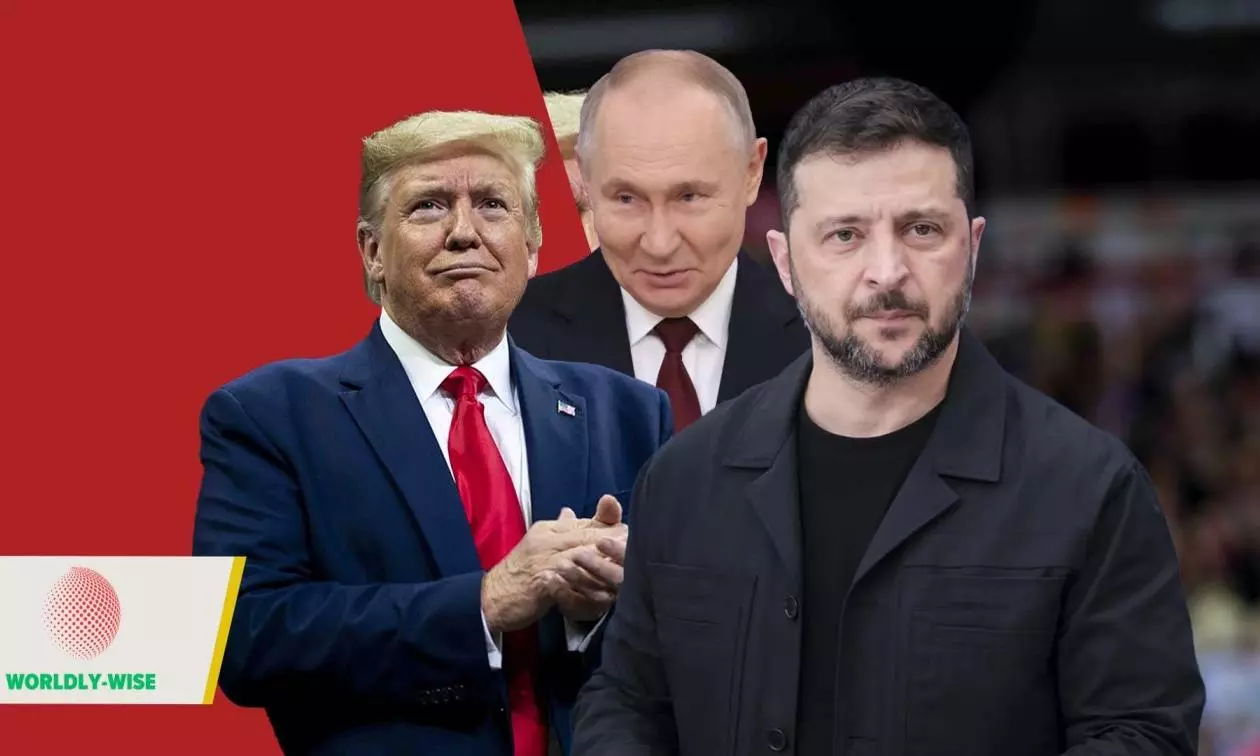
Trump’s gamble: Can he broker peace in the Russia-Ukraine war?
Trump’s meetings with Putin and Zelenskyy raise hopes of ending the war, but are sacrifices and compromises inevitable?

US President Donald Trump’s recent meetings with Vladimir Putin in Alaska and Volodymyr Zelenskyy in Washington have fuelled speculation about a possible breakthrough in the ongoing Russia-Ukraine war.
With territorial disputes unresolved and NATO expansion still a contentious issue, the stakes are high—not only for Ukraine and Russia but also for America’s global standing.
In this conversation with The Federal, international affairs specialist KS Dakshina Murthy decodes the challenges and possibilities in Trump’s diplomatic gamble.
How important is it for President Trump to secure an end to the Russia-Ukraine war?
If there is one issue on which Trump has staked his reputation, it is this war. During his campaign, he repeatedly questioned why the US was spending so much money on the conflict and promised to resolve it quickly—at one point even claiming he would do it in a day. While that was likely hyperbole, it underscored his intent to push aggressively for peace.
Over the past eight months since taking office, Trump has made this his top priority. He humiliated Zelenskyy at the White House in an attempt to pressure him into making concessions with Putin, and his tilt towards Russia has been evident. Trump has even suggested that Russia has the upper hand, signalling that some sacrifices will be required for a settlement.
Also read: Trump's Act 2 in Ukraine peace push leaves many key questions unanswered
For him, this is not only about personal political credibility but also about proving that America can still act as a global superpower capable of delivering peace. If he fails, it would be a serious loss of face.
Trump hosted Putin in Alaska, but the talks ended without a ceasefire. Do you see this as genuine progress or just diplomatic optics?
Europe was hoping for a ceasefire as the first step, but Putin refused, with attacks continuing in Ukraine even as the talks took place. The war may have gone slightly low-key, but it has not stopped.
Still, this may be a matter of sequencing. Once there are bilateral or trilateral talks involving Putin, Zelenskyy, and Trump, the war will inevitably end. A ceasefire would have signalled momentum, but without it the situation remains uncertain.
Also read: US troops won't be sent to help defend Ukraine, says Trump
Both Trump and Putin are unpredictable. Putin can be friendly but also extremely firm if his conditions are not met. So, while there is some progress, the outcome remains far from certain.
Zelenskyy has demanded the return of Russian-occupied territories such as Crimea and Donbass. Is it realistic to expect Russia to give up this land?
This is the toughest sticking point. Russia currently controls nearly 20 per cent of Ukraine’s territory, stretching from the east to the south. For Putin, this land is non-negotiable because he views it as a critical buffer zone against Western threats.
Zelenskyy cannot agree to give it up. If he does, it will trigger backlash within Ukraine, as people will see it as a betrayal of the sacrifices made in the war. Crimea offers a precedent—despite sanctions and global condemnation, Russia has held it since 2014. That strongly suggests Moscow has no intention of returning the land it now holds.
Also read: Trump imposed tariffs on India to end Russia-Ukraine war: White House
For Trump, the challenge is leverage. What can he offer Putin in exchange for giving up territory? Even US Secretary of State Marco Rubio has acknowledged that sacrifices will be necessary, though it remains unclear who will make them. A full return to pre-war borders looks highly unlikely.
European leaders insist that Ukraine must be fully involved in any settlement. Does Trump’s approach risk alienating Europe?
There are two dimensions here: Zelenskyy’s participation and Europe’s role. Trump has made it clear that Zelenskyy will not be sidelined—he remains central to the talks. Bilateral meetings between Zelenskyy and Putin are likely, followed by trilateral discussions with Trump, and possibly broader European involvement later.
Europe, however, is not central to Trump’s approach. While he has softened his stance towards NATO allies recently, his actions suggest he views Europe as dispensable in this process. His focus is on direct negotiations with Russia and Ukraine, with Europe joining later if necessary.
Also read: Trump cancels summer vacation due to Ukraine talks
Putin has once again demanded that NATO stop expanding into Ukraine. Does this demand still carry weight, and is the US signalling any compromise?
Yes, this remains at the core of the conflict. The Biden administration and Europe had earlier insisted that Ukraine’s NATO membership could not be blocked, but Putin consistently warned that this crossed Russia’s security red lines. That culminated in the invasion of February 24, 2022.
Trump has now categorically stated that Ukraine will not be a part of NATO. This fulfils Putin’s primary demand and is one reason why the peace talks have progressed. With this concession effectively settled, Putin has shown more willingness to continue dialogue.
Also read: Putin ready to meet Zelenskyy, says US Secretary of State Marco Rubio
At this stage, NATO expansion into Ukraine is no longer on the table, and that represents a major win for Russia. It also explains why Putin is engaging in these negotiations with renewed interest.
(The content above has been transcribed from video using a fine-tuned AI model. To ensure accuracy, quality, and editorial integrity, we employ a Human-In-The-Loop (HITL) process. While AI assists in creating the initial draft, our experienced editorial team carefully reviews, edits, and refines the content before publication. At The Federal, we combine the efficiency of AI with the expertise of human editors to deliver reliable and insightful journalism.)

